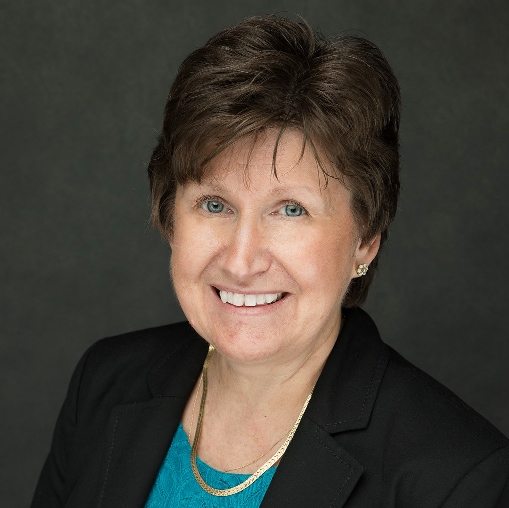The role of “communicator” is becoming increasingly important for marketing executives. More and more, they are being called on to help explain all the complexities in healthcare, as well as the organization’s response to non-ending change, to employees, physicians, patients, and the community at large.
There’s a need to talk about issues such as consumerism, transparency, and population health in terms that are understandable to both internal and external audiences and to provide resources so that managers and leaders can help their teams understand and prepare for changes. And, with mergers on the rise, marketers have a critical role to play in developing effective communication around the new affiliation and in shaping a unified brand. Many are also being asked to help promote efforts to transform internal culture.
All of this means that the responsibilities of marketers, public relations professionals, and internal communicators are becoming intermixed. To maximize their success in reaching and engaging audiences—both within and outside the organization—these disciplines must move beyond functioning in separate silos. Instead, they must work together as an integrated force.
And, in fact, that’s already happening in a number of healthcare organizations: there is a growing trend to create organizational structures that wrap multiple aspects of communications under the purview of a single person.
At Johns Hopkins Medicine, Baltimore, MD, changes were made several years ago to form one team that supports both internal and external communication, marketing, and consumer research for both the school of medicine and the health system. “Our team is always pulling a group together to address all aspects of a narrative and align all the messages on all the distribution platforms we have available,” says Dalal Haldeman, PhD, Senior Vice President of Marketing and Communications.
“This is a change I’m seeing more and more among people at the vice president level,” adds Lisa McCluskey, Vice President of Marketing Communications, CHI Memorial Health, Chattanooga, TN. “And there are a lot of advantages to it. For example, it improves the ability of communications leaders to shape culture for internal audiences while also engaging employees and helping to turn them into brand ambassadors for external audiences.”
Balancing Communications
Healthcare communications works best, McCluskey says, when organizations can avoid fragmentation of responsibilities and all players understand where they fit within the organizational structure. In a recent re-launch of its institutional vision, CHI Memorial created a Journey Map to outline how all employees are fundamental to effective communication. The 18-foot by 4-foot map visualizes the institution’s strategic plan, highlighting how internal and external communications are interconnected with human resources and public relations.
Managers in each department also received a tool kit, complete with a mini-map, to answer questions and address any barriers to advancing the organization’s mission. All new initiatives are introduced with a clear explanation of how they merge with the strategic plan.
“It helps people visualize where they fit in the journey, and they’re inspired by that,” McCluskey says. “They see how they can properly move the organization forward. It keeps them engaged and gets them excited about being champions for our institution.”
CHI also launched a brand ambassador program that turns interested employees into de facto communicators. Monthly, ambassadors visit and learn about different hospital departments so they can accurately answer patient and community questions. The nascent program still faces challenges as employees juggle their daily responsibilities with fulfilling ambassador duties, but response, to date, has been positive, McCluskey says.
Redefining Roles
In addition to avoiding fractured messaging, bringing different groups together can also re-define communications roles, says Lisa Stockmon, Chief Marketing and Communications Officer, City of Hope National Medical Center, Duarte, CA.
“Working with teams responsible for internal communications along with marketing and external communications can create a real synergy around organizational strategy,” she says. “As communicators, we’re responsible for making sure we have the correct message aligning with the right audience.”
City of Hope took a significant step in that direction in 2016 when it created an executive vice president for transformation role that is responsible for both internal communications and human resources. With that position in place, the organization has a better grasp on how to transform messages to reach multiple audiences.
“This role is helping us find the right message, making sure we integrate and align our skills,” Stockmon says. “It’s helping us understand how to make our media efforts fluid inside and outside.”
Maximizing Impact
It’s not just about alignment on an organization chart, though. Physical placement within the organization also plays a role in communications effectiveness.
“Organizations that keep their marketing, human resources, and communications staff in centralized locations closest to day-to-day activities and conversations have the most success,” says Marilyn Wilker, President, MintChip Communications. “With greater proximity to patients, employees, and leaders, communicators can gather information to tell stories, identify needs, and build partnerships that fulfill goals and priorities.”
Most importantly, Wilker says, communicators must feel well connected. “To do a good job, you have to feel the message,” she explains. “If you feel like you’re off in a cubicle, separated from everything, it creates challenges. You no longer have your fingers on the pulse of the organization.”
Having your fingers on the pulse … ‘feeling’ the message … those are the keys to keeping the organization’s messages authentic. Even though internal and external communications teams might be pulled in many different directions simultaneously, there are steps they can take to make the most of their roles. Those include:
1. Identify purpose. Hone in on the purpose behind the message. Beyond disseminating information, “our communicators always focus on the purpose and on the change we want to achieve” adds Johns Hopkins’ Haldeman. At many organizations, that means understanding how executive leadership wants to change the internal culture and finding a way to guide the facility in a new direction.
2. Recognize that internal communications helps shape external messaging. “Effectively relaying information within the organization is the basis for how crisis, corporate communications, and marketing messages are formed,” says Wilker. “So a solid internal communications function is essential to effective external communications. From a business perspective, whether it’s a merger and acquisition or a push to garner more clientele from referring physicians, the coordinated efforts of marketing and public relations personnel can effectively sell services, promote reputations, and improve brand perceptions. And that all starts with a viable, authentic internal message.”
3. Keep message succinct and multi-dimensional. Boil messages down to make them easily digestible, and push them out via multiple channels, including email, social media, intranet, and face-to-face discussions.
4. Survey customers. Whether it’s patients, employees, or physicians, post pertinent questions to these audiences on a semi-regular basis. Their responses can help guide the crafting of messages that articulate the organization’s vision, mission, and purpose in ways that resonate with intended audiences. And, think beyond traditional surveys and focus groups.
For example, at Johns Hopkins, patients are invited to discuss their experiences at internal meetings and town hall meetings designed to highlight issues of importance to the organization. “I invite patients because I want to inspire employees about why they’re here,” says Haldeman. “At these meetings, patients speak openly about what they liked and didn’t like about their experiences with our institution. They reveal what’s important to them and where communicators and staff can improve. It’s an opportunity for all of us on the inside to hear about things we could do better.”
5. Engage experts. Include input from faculty or clinical experts, when possible, to add weight to any communications effort. For example, have a neurosurgeon write an article for the employee newsletter or contribute quotes to a press release about a new procedure.
6. Share success stories. Highlighting employee accomplishments is a great way to keep staff engaged in the organization’s mission and to help them work together more harmoniously, says Haldeman. Johns Hopkins’ internal e-newsletter Dome includes stories that feature the accomplishments of all employees—from clinical nurses and physicians to environmental, security, and food service workers. “News about our promise of medicine and values in action go out via daily emails, so employees can read the items at their leisure,” Haldeman explains. “People adore these news items featuring their colleagues. We’ve made them very easy to access and understand.”
Spreading the Word
At the end of the day, communicators must remember their ultimate responsibility is spreading information and teaching both internal and external audiences—employees, patients, and the community at large—about the benefits of the organizations they serve.
“The role of a communications team is to make sure the people of the world know what is available at their institutions,” Haldeman concludes. “More than any other business function, communicators are there to provide hope and information through the stories we tell on the web, in the news, or to our patients and colleagues.”
This article was written by Whitney J. Palmer, contributing writer for Healthcare Strategy Alert, and Debbie Reczynski, editor of Healthcare Strategy Alert and Director of Publications and Program Development for the Forum for Healthcare Strategists. For more information, contact dreczynski@healthcarestrategy.com.

Debbie Reczynski is Director of Communications and Program Development for the Forum for Healthcare Strategists.


